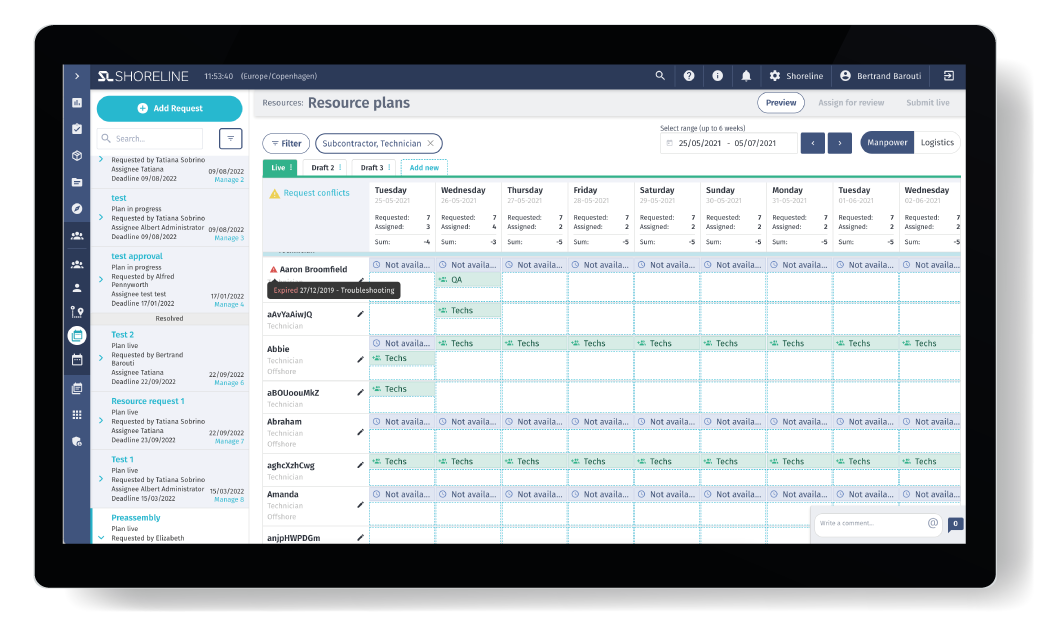Why AI is Essential for Smarter Capacity Scheduling in Onshore Wind
Most developers and operators rely on manual processes to plan capacity schedules for their wind projects, but AI can show them the answers to maximize returns.

Onshore wind has moved beyond its initial ‘gold rush’. Developers and operators have banked a huge amount of knowledge in the last decade as wind farms have expanded to be a major part of the global energy mix, but now new solutions are needed.
Companies are operating in a more complex environment than ever. Wind turbines are more expensive than they were three years ago due to the rising cost of raw materials, supply chain disruption, higher interest rates, and shortages of skilled labor. This is a key reason why developers and operators are now working with tighter profit margins and need to find new ways to manage their risks and increase their returns.
One area where companies can do this is with improvements to the ‘capacity schedule’.
How companies develop capacity schedules today
Capacity scheduling is the process of planning the use of technology, workforce, and other resources efficiently in the construction and operational phase of a wind farm. In this stage of the wind farm life cycle, developers and operators must be able to predict potential construction bottlenecks or problems so they can deliver projects efficiently.
The difficulty is that more companies in the wind industry are still too reliant on manual processes, such as spreadsheets, when they put together these schedules. Relying on spreadsheets is inefficient because there are now too many variables to consider that could have a significant impact on project returns. The result is that the spreadsheet either over-simplifies the complexity of project challenges or becomes too cumbersome to use effectively.
At a basic level, a capacity schedule will cover the delivery of physical elements such as turbines and substations; the availability of workers needed to carry out the work; any necessary permits and when they expire, and other predictable constraints, such as the impacts of snowy conditions if the wind farm is being built in a cold country.
But this does not take into account the sheer complexity that can affect projects during the construction and operational phases. Developers and operators need nuanced and long-term plans if they are to account for the many factors that can affect wind projects and financial returns. This is where artificial intelligence (AI) comes in.
Why AI-developed capacity schedules make the difference
AI-enabled capacity schedules are not static. Yes, they bring in the same sort of basic information as in a manual spreadsheet, but they can also run regular simulations that enable developers and operators to adapt quickly. This can include data about adverse weather conditions that affect construction schedules; short-term supply chain issues; or accidents. AI-based solutions can also help companies to plan over longer periods (i.e. five years or longer) and align more closely with long-term investment decisions.
In contrast, most conventional tools struggle to cope with this level of uncertainty. An AI-based solution provides you with accurate forecasts and a plan based on sensible answers, and put together that first draft of a plan better than you can. You can refine this plan by adding new information such as the parameters of your contracts or your desired project performance level.
For example, if your simulation shows that your construction schedule is a few months late, then the power of AI could help you find ways to get back on track.
Renova, the Japanese developer and independent power producer, is one company that uses Shoreline’s AI-based simulations to enhance construction projects. The firm is building the 55MW Reihoku-Amakusa onshore wind farm in Japan, which involves the construction of 13 wind turbines in the face of major logistical challenges.
This project is affected by severe tidal restrictions at the arrival port, and mountainous terrain that means there is limited available land for turbine storage and construction staging. Just-in-time logistics are critical to the success of this project, and so Renova needs a capacity schedule that can accurately account for these difficulties.
This is an example of how Shoreline Wind’s full-scale planning, construction and O&M platform helps wind developers, operators and service providers to unlock a new era of resilient growth. Shoreline has recently expanded its services into the onshore wind industry, which comes at a crucial time as companies in Europe grapple with European Union targets to accelerate green electrification; and as those in the US market look to navigate the changing policies of the Trump administration.
The bottom line is that digital tools to help developers and operators through the life cycle are no longer optional in the onshore wind market. They are essential as firms cope with the shift from boom period to an era of discipline, resilience and efficiency.
AI will aid companies through the life cycle and capacity scheduling is no exception.